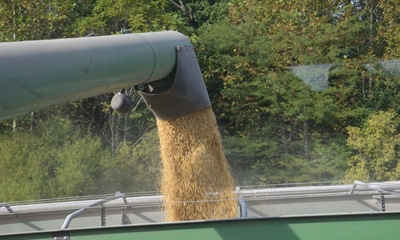August 29, 2016

Cash rents declined in Indiana in 2015 and 2016. Continued low crop net returns suggest cash rents may continue to weaken in 2017. For obvious reasons, landowners are reluctant to lower cash rents, particularly given the uncertainty with respect to prices in 2017 and beyond. Switching from a fixed cash rent lease to a flexible cash rent lease allows a lower base rent to be established while simultaneously allowing landowners to share in relatively high crop revenues if they occur.

CASH RENT QUANDARY: Flexible cash rent could be an option as a way to hang on to land for 2017 despite low commodity prices.
Parameters that need to be considered when developing a flexible cash rent lease include a base cash rent, crop revenue triggers and landowner shares above the revenue trigger. For the illustration here, we’ll set base cash rent at 75% of current cash rent. Nonland costs can be used along with the base cash rent to set the crop revenue triggers. The landowner share above the revenue trigger can vary, but for illustrative purposes, let's use 50%.
Let’s use a simple example to illustrate how a flexible cash rent lease may work. Assume the current cash rent is $240 per acre. Using this figure, base cash rent will be set at $180, which is 75% of current cash rent.
We will assume the farm uses a corn-soybean rotation. Using cost budgets for corn and soybeans, revenue triggers are set at $700 per acre for corn and $540 per acre for soybeans.
Follow scenarios
Using the base case rent and revenue triggers above, let’s see how two scenarios for 2017 would play out. The first scenario uses trend yields and relatively low prices, while the second scenario uses above-trend yields and relatively high prices.
Under the first scenario, corn and soybean yields are 180 and 55 bushels per acre, respectively. Corn and soybean prices are $3.65 and $9.25 per bushel, respectively. Under these assumptions, corn and soybean revenues are $657 and $509 per acre, respectively. Both of these revenue amounts are under the revenue triggers. Thus, base cash rent applies. Under this scenario, the landowner would receive $180 per acre in cash rent for the year.
Under the second scenario, corn and soybean yields are 200 and 60 bushels per acre, respectively. Corn and soybean prices are $4 and $10.20 per bushel, respectively. Using these assumptions, corn and soybean revenues are $800 and $612 per acre, respectively.
For both corn and soybeans, revenue exceeds the trigger. Using trigger revenue amounts and a landowner share above the trigger of 50% results in a cash rent of $230 for corn [$180 + ($100 above trigger x 50%)] and $216 for soybeans [$180 + ($72 above trigger x 50%)]. On average, under this scenario, the landowner would receive $223 per acre in cash rent for the year.
More information on cash rents and land values can be found on the website for the Center for Commercial Agriculture.
Langemeier assists with Purdue University’s Center for Commercial Agriculture. He writes from West Lafayette.
You May Also Like




